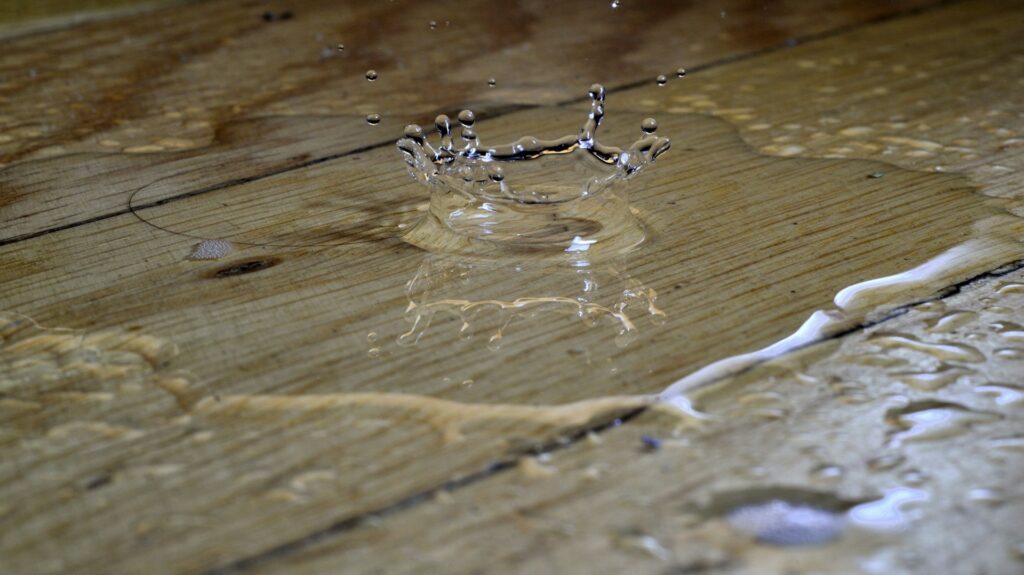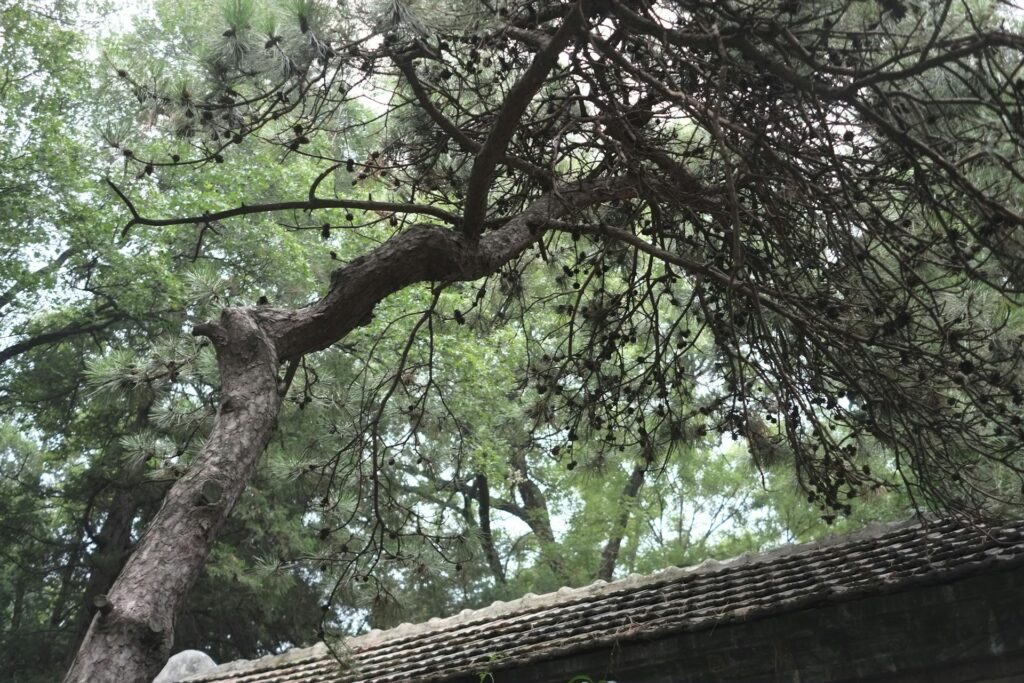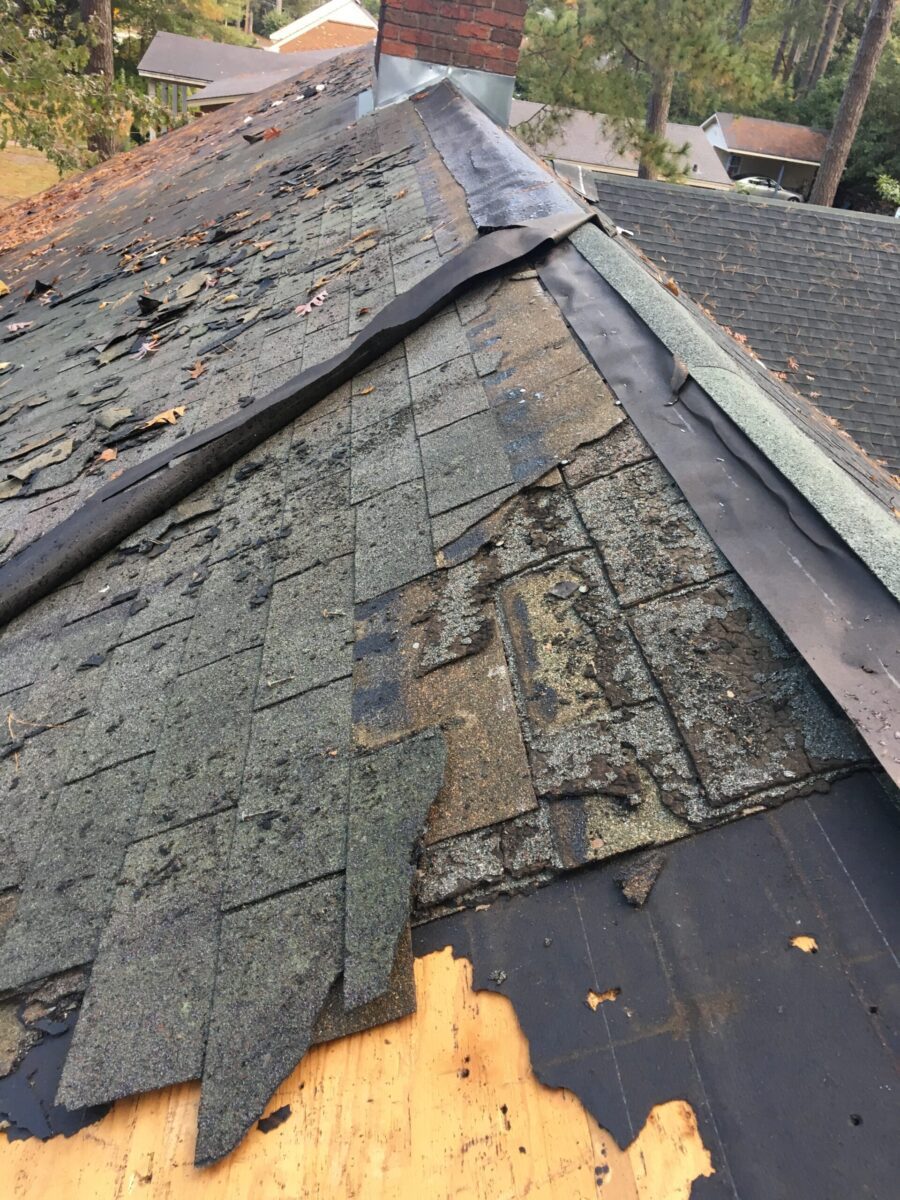After extended exposure to our North Carolina weather (or just one bad storm), a roof develops problems. Wear and tear happens, and leads to many common roofing problems. When we inspect roofs in the communities we serve, we see it all. But, while certain issues are unavoidable, they can be controlled with diligent maintenance, which can save tens of thousands of dollars down the road.
For example, we get frequent calls reporting lifted or damaged roof shingles. In other cases, we’ll find dry rot on the roof, which needs to be taken care of immediately. In this article, we discuss these and other commonly found roofing problems, so that you can identify small issues before they become major headaches. However, the best thing to do if you suspect a problem with your roof is to schedule an inspection. Read on to learn more about these common roof issues.
Common Roofing Problems Found During Inspections
Here are the roofing problems to watch out for on your roof:
Water Damage
North Carolina receives heavy rain and frequent storms; it’s no wonder that water damage tops our list. Debris on your roof will obstruct gutter drainage. Standing water or constant moisture takes its toll on roofing materials, and mold, mildew, and algae are soon to follow. Mold appears as gray, green, or black streaks. Mildew appears as yellow, white, or gray powdery patches, while algae appear as dark green or black vertical patches or streaks running down the roof. This will damage the roofing materials, resulting in weakened, damaged roof shingles. Occupants may begin to develop health concerns from mold spores that get into the house through the attic or HVAC system.
To avoid water damage after a storm, call for our residential storm damage services and we’ll repair vulnerable areas.
Roof Leaks

Roof leaks are also common. They result from other roofing problems, such as ice dams, poor roof installation, or failing roofing materials like damaged flashing or broken pipe boots. You can identify leaks from water stains running down the walls from the ceiling, especially in areas where the roof would have a ‘joint’, such as around the chimneys, vents, skylights, or the valleys. You may eventually see water stains on your ceiling. Contrary to what you might expect, dry rot requires moisture and can also eventually damage the entire roof and internal structure of the building. If there are signs of leaks in your building, have them addressed immediately.
Broken or Damaged Flashing
Flashing is the thin metal that is placed on the joints where surfaces intersect on a roof, such as where the roof meets the chimney. Flashing acts as a seal or a barrier that prevents moisture and water from penetrating these vulnerable areas. Compromised flashing can also quickly lead to common roofing problems, degrading the roofing material and the structure beneath. If your flashing looks loose or damaged, call for immediate roof repair services.
Faulty Roofing Materials
The reliability of your roofing depends on the quality of the materials used and the quality of the work performed. But, in the hands of an expert roofing contractor, many issues can be avoided entirely. If you have doubts about what’s overhead, call us to assess the condition of your roof. Addressing the problem early may prevent it from escalating into a more extensive and costly repair down the line.
Poor Attic Ventilation
Poor or inadequate ventilation keeps air from circulating in the attic. This keeps hot, moist indoor air from escaping. As moisture and heat build up, they create ideal conditions for common roofing problems, such as mold, dry rot, rust on metal components, ice dams on the roof edges from melted snow, and warped or sagging roof decking. You might also notice increased attic temperatures, increased energy bills from overworking HVAC systems, or water dripping after condensing at night. If you see any of these issues, contact us. Our expert roof inspectors will come over to evaluate your roof and attic ventilation system and schedule the necessary repairs.
Clogged Or Broken Gutters
Gutters are often the culprit for some of the most common roofing problems homeowners and commercial building owners face in North Carolina. Gutters and downspouts in good repair collect water and redirect it away from the roof and the building. However, when clogged or leaking, water does not drain properly, and lingers where it shouldn’t. Similarly, if gutters are broken and not effectively collecting rain water, water can penetrate siding, the foundation, and may even seep into the interior of the house. To avoid these problems, have your gutters repaired immediately if you notice leaks, sagging or improperly pitched gutters, or water damage. Contact the gutter and eaves repair experts at Alliance Roofing.
Tree Damage

Tree damage isn’t a surprise in North Carolina. We’re surrounded! When branches or entire tree trunks fall, it’s not good news, and many home owners find themselves looking for emergency roof repairs. Damaged roof shingles, bent metal roofing, and giant holes from fallen trunks and branches are all run of the mill.
While regular tree trimming can prevent some issues, it’s not always an option. Leaves and twigs that fall from overhanging trees can obstruct the flow of water down your roof and in the gutters, leading to standing pools of water that can eventually seep through your home and into the attic. If there’s debris on your roof, our regular roof maintenance services can help.
Schedule a Roof Inspection
If you’re worried about any of the common roofing problems listed above, or are noticing issues, contact Alliance Roofing. Our team of roofing experts is highly trained, has extensive experience, and is ready to investigate and address current or future problems. We’ll work with you to ensure that your roof remains sturdy and can perform optimally longer. Call now to schedule a free and thorough roof inspection.
